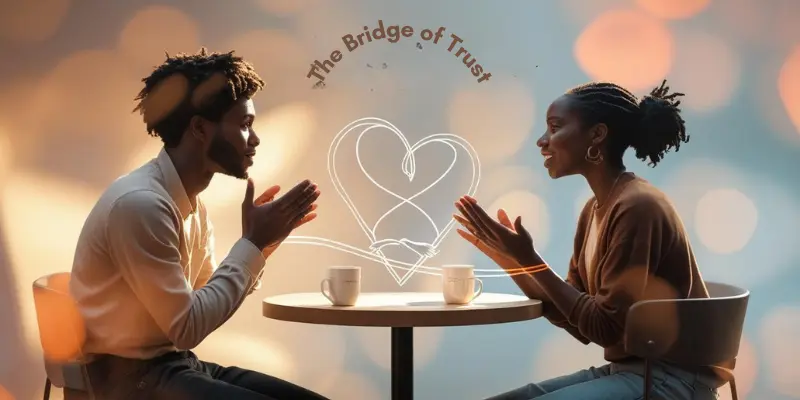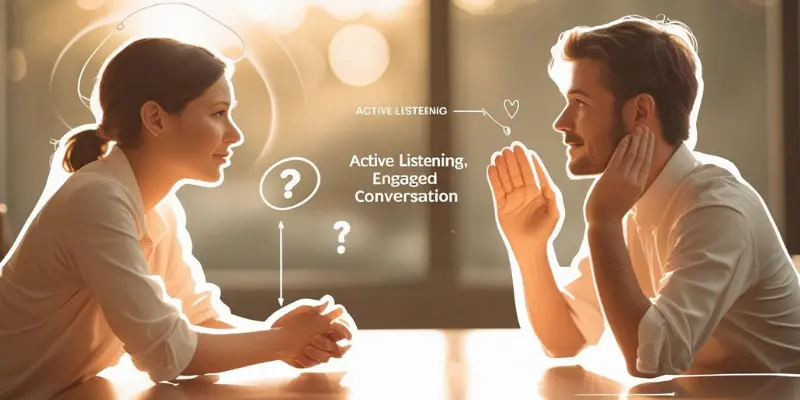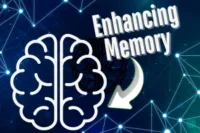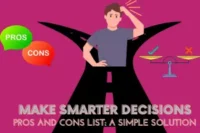Understanding Others: 7 Key Strategies for Building Stronger Relationships and Empathy”
Published: 15/08/2025
Have you ever found yourself in a conversation where you just don’t ‘get’ the other person? Whether it’s in a meeting, at home, or even with friends, we’ve all been there. Misunderstanding others is frustrating, but the good news is, it’s a skill you can develop.
Understanding others isn’t always easy. Whether it’s figuring out a colleague’s perspective at work, connecting with a family member, or simply relating to someone from a different background, many of us struggle to truly understand the thoughts, emotions, and motives of others.
But what if you could enhance this skill? In this post, we’ll explore 7 key strategies that will transform how you understand and relate to others, strengthening your personal relationships, improving communication, and boosting your professional success. Let’s dive in and discover the simple yet effective ways you can improve your empathy and understanding.
Why Understanding Others is Important
When you make the effort to understand others, you’re not just hearing their words—you’re grasping the meaning behind them. This awareness bridges gaps in conversation, reduces unnecessary tension, and creates space for honest dialogue.
Enhances Communication
Understanding others is at the heart of effective communication. When you truly understand where someone is coming from—whether it’s their perspective, emotions, or context—your responses become more thoughtful and relevant. This not only helps reduce misunderstandings but also fosters a more open, respectful exchange of ideas.
Example:
“When you make the effort to understand someone’s perspective, your responses become more thoughtful. This transforms your conversations into productive discussions, whether you’re negotiating at work or chatting with a friend.”
Strengthens Relationships
Whether personal or professional, relationships thrive on trust and mutual understanding. When you take the time to understand others—whether it’s your partner, colleague, or friend—you create a foundation of trust. Empathy and understanding lead to stronger emotional bonds, making your relationships more fulfilling and resilient.

Example:
Empathy and understanding are the bedrock of trust in any relationship. By truly listening and trying to understand the other person’s feelings, you can create deeper emotional connections and strengthen the ties you share.
Resolves Conflict
Understanding others is one of the most powerful tools in conflict resolution. When you make an effort to understand where the other person is coming from, it opens the door for finding common ground. This helps you avoid unnecessary escalation and find solutions that work for everyone involved.
Example:
Imagine you’re in a heated debate with a colleague. By taking a moment to see things from their point of view, you’re more likely to find common ground, which can lead to a peaceful resolution, instead of further conflict.
7 Key Strategies to Understand Others Better
Improving how we understand others starts with practical steps you can apply every day. These strategies help you connect more deeply, respond thoughtfully, and build stronger, more meaningful relationships.
Active Listening
Active listening goes beyond just hearing words—it’s about truly engaging with what the other person is saying. It requires focus and intent to fully understand the speaker’s message, emotions, and underlying thoughts. By actively listening, you show respect and validate the other person’s feelings, which strengthens your connection and fosters trust.

Tip:
Focus fully on the speaker, avoid interrupting, and ask clarifying questions to show you’re engaged. For example, try asking, ‘Can you tell me more about that?’ to dive deeper into their perspective.
Practice Empathy
Empathy is the ability to understand and share the feelings of others. It allows you to connect on an emotional level and helps you recognize why people behave the way they do. Practicing empathy means listening with your heart, not just your ears. It can change the way you respond to others, making you more compassionate and understanding.
Tip:
Put yourself in the other person’s shoes—ask yourself how they might be feeling based on the situation. For example, if someone is upset, think about what might be causing their distress, and show compassion rather than judgment.
Ask Open-Ended Questions
Open-ended questions encourage a more in-depth conversation and help uncover the full picture of someone’s thoughts and feelings. Unlike yes/no questions, open-ended ones invite the speaker to elaborate and provide insight into their perspective, creating more meaningful dialogue.
Tip:
Instead of yes/no questions, ask ‘How do you feel about this?’ or ‘What’s your perspective on this issue?’ This will help you gain a deeper understanding of their viewpoint.
Avoid Assumptions
It’s easy to assume we know how someone feels or what they mean, but these assumptions often lead to misunderstandings. By assuming, we close ourselves off from truly understanding the other person. It’s important to keep an open mind and gather all the information before drawing conclusions.
Tip:
Don’t assume someone’s thoughts or feelings—ask them directly to understand their point of view. For example, ‘I think I understand, but could you clarify what you meant by that?
Be Patient and Open
Rushing to conclusions or judgments can cloud your understanding of others. To truly understand someone, you need to be patient and allow them the space to express themselves fully. By being open, you invite a more honest exchange of thoughts and feelings.
Tip:
Take your time to understand the full story. Don’t rush to judge or react. Sometimes, letting the other person speak without interruption leads to a much clearer understanding.
Practice Perspective-Taking
Perspective-taking is the practice of stepping outside your own viewpoint and considering how someone else might see or feel about a situation. It’s a powerful tool for understanding others because it broadens your ability to empathize and recognize different emotional states.
Tip:
Make a conscious effort to imagine things from someone else’s point of view before responding. For instance, if someone is upset, instead of reacting defensively, think about what might be causing their emotions and respond with empathy.
Reflect on Personal Biases
Everyone has biases, whether conscious or unconscious. These biases can affect how we understand and relate to others. By reflecting on your biases, you can ensure they don’t cloud your judgment or hinder your ability to empathize with others.
Tip:
Acknowledge your biases and work on them so they don’t influence how you understand others. Regular self-reflection helps you identify and address your biases, allowing you to engage more openly with diverse perspectives.
Common Mistakes to Avoid When Trying to Understand Others
Even with the best intentions, it’s easy to fall into habits that block understanding. Recognizing these common pitfalls helps you stay aware, listen carefully, and respond in ways that truly reflect what the other person is expressing.
Making Assumptions
One of the most common mistakes people make is assuming they understand what someone else is thinking or feeling based on limited information. Assumptions can lead to misinterpretations and misunderstandings, as they don’t take into account the full picture. Understanding others requires patience, openness, and a willingness to ask questions instead of jumping to conclusions.
Example:
Assuming you know what someone else is thinking can cause misunderstandings. It’s better to ask and clarify. For example, instead of assuming a colleague is upset with you, try saying, ‘I noticed you seemed quiet during the meeting. Is everything okay?
Interrupting or Not Listening Fully
Active listening is one of the most important skills in understanding others. However, many people tend to interrupt or jump in with their thoughts before the other person has finished speaking. This not only disrupts the conversation but also signals that you’re not fully invested in hearing the other person’s perspective. Effective communication requires listening attentively without interrupting, allowing the other person to express themselves completely.
Example:
Interrupting someone shows you’re not fully listening. Let them finish before offering your opinion. For example, if a friend is explaining their feelings, wait until they’ve said everything they want to share before responding. This helps ensure you truly understand their point of view.
Focusing Only on Words, Not Nonverbal Cues
Words are only part of communication. A significant portion of our emotions and intentions is conveyed through nonverbal cues—like facial expressions, body language, and tone of voice. When we focus only on the words being spoken, we miss out on valuable emotional context. To truly understand others, it’s crucial to pay attention to these cues, which often communicate more than words ever could.
Example:
Often, people’s feelings are conveyed through their tone and body language more than through words. For instance, if someone says ‘I’m fine’ but their body is tense, it might indicate that they’re not truly okay. Pay attention to how someone says something, not just what they say.
Expert Tips for Deepening Your Understanding of Others
Even after mastering basic strategies, there’s always room to grow. Expert tips provide ways to deepen your understanding, helping you connect more meaningfully and respond with greater insight in everyday interactions.
Use Empathy-Building Exercises
To strengthen your ability to empathize with others, incorporate empathy-building exercises into your routine. One great way to do this is by reading literary fiction, as it allows you to dive into diverse characters’ experiences and perspectives. Fiction can provide insights into people’s emotions and motivations, enhancing your ability to relate to others in real life. Volunteering with different groups is also a powerful way to expand your empathy, as it exposes you to diverse backgrounds and struggles.
Example:
Try exercises like reading literary fiction or volunteering to expand your ability to empathize with diverse perspectives. Books like *To Kill a Mockingbird* or The Kite Runner offer deep insights into human emotions and can help you understand different life experiences.
Practice Mindfulness
Mindfulness is the practice of being fully present and aware in the moment. When you’re engaged in a conversation, practicing mindfulness helps you focus entirely on the speaker, without distractions or preconceived judgments. By doing so, you’re more likely to pick up on subtle emotional cues and be fully attuned to the other person’s feelings. This deeper awareness can greatly enhance your ability to understand others.
Example:
Mindfulness helps you become more present in conversations, making it easier to understand others’ thoughts and emotions. Before you engage in a discussion, take a few deep breaths, clear your mind, and focus entirely on the speaker’s words and body language.
Reflect Regularly
Reflection is a powerful tool for improving your understanding of others. After each conversation, take a moment to reflect on what you learned about the other person. What did you understand about their feelings, thoughts, and perspective? Did you miss any important cues? Regular reflection allows you to recognize patterns in your communication, uncover any biases, and continuously improve how you understand and relate to others.
Example:
Spend time reflecting on your conversations and interactions, considering what you learned about others and how you could improve. For instance, after a meeting with a colleague, reflect on how well you understood their concerns and whether there were moments where you could have shown more empathy.
Conclusion: Take Action to Understand Others Better
Now that you have the tools to understand others better, it’s time to put them into practice. Choose one strategy from the list and start implementing it in your next conversation. Whether it’s practicing active listening or asking open-ended questions, taking action is the first step toward building stronger, more empathetic relationships.
“Choose one strategy from the list and practice it in your next conversation to start seeing improvements in your relationships. You’ll be surprised how much small changes can make in fostering deeper understanding and connection.”
Understanding others is an ongoing journey. Start today by incorporating these strategies into your daily life, and share your experiences in the comments below! Let’s build a community of empathetic communicators and support each other in improving our relationships.
“Start building stronger relationships today by implementing these strategies and share your experiences in the comments below! We’d love to hear how these tips are making a difference in your connections.”
Key Questions You’re Asking (and Our Expert Answers)
Understanding others means recognizing their thoughts, feelings, and perspectives. It’s crucial for building stronger relationships, reducing misunderstandings, and improving communication skills in personal and professional settings.
Start by practicing active listening, asking open-ended questions, and putting yourself in others’ shoes to better understand their emotions and perspectives. These simple strategies will strengthen your relationships.
Understanding others leads to improved communication, stronger emotional connections, better conflict resolution, and deeper trust, whether in personal relationships or at work
Empathy allows you to emotionally connect with others by understanding their feelings and experiences. It’s a core skill in building relationships, resolving conflicts, and creating supportive environments.
Active listening helps ensure you fully understand what someone is saying without distractions. It leads to better conversations, reduces misunderstandings, and shows respect for the speaker’s perspective.
Assumptions can cloud your judgment and prevent you from truly understanding another person’s feelings or thoughts. It’s crucial to ask questions and get clarification rather than jumping to conclusions.
In the workplace, empathy helps in team-building, conflict resolution, and leadership. By practicing empathy, you can better understand colleagues’ concerns, improve collaboration, and foster a supportive work culture.
Some common mistakes include interrupting others, making assumptions, not listening fully, and focusing only on words instead of paying attention to nonverbal cues like body language and tone.
Yes! Understanding others is the foundation of strong relationships. It helps you connect on a deeper level, resolve conflicts, and build trust, making your interactions more meaningful and fulfilling.
Acknowledging your biases is the first step. Practice self-reflection, be mindful of your assumptions, and work on becoming more open-minded when interacting with others to ensure better understanding.

- Be Respectful
- Stay Relevant
- Stay Positive
- True Feedback
- Encourage Discussion
- Avoid Spamming
- No Fake News
- Don't Copy-Paste
- No Personal Attacks



- Be Respectful
- Stay Relevant
- Stay Positive
- True Feedback
- Encourage Discussion
- Avoid Spamming
- No Fake News
- Don't Copy-Paste
- No Personal Attacks





